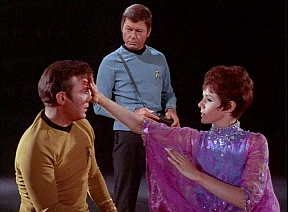B Is For Bellatrix & Brutos
 Bellatrix was founded as a gengineering research outpost by the Meteor Alliance, a long-defunct corporation. The planet’s minimal biosphere was believed to be an ideal location for genetic manipulation of microorganisms, including the wide variety of alien microbial life that still manages to thrive in the planet’s waterless, inhospitable conditions.
Bellatrix was founded as a gengineering research outpost by the Meteor Alliance, a long-defunct corporation. The planet’s minimal biosphere was believed to be an ideal location for genetic manipulation of microorganisms, including the wide variety of alien microbial life that still manages to thrive in the planet’s waterless, inhospitable conditions.
When the dragons invaded the sector, they had little reason to focus much attention on Bellatrix. The population was small and inoffensive. As the rage of the dragons gave way to the Tiamat’s supremacy, Bellatrix suffered only brief violence. The Meteor Alliance was dismantled, and for centuries nothing lived on Bellatrix except alien microbes. During the Age of Ashes, Duke Níðhöggr of Ylli permitted the establishment of a colony on Bellatrix under the auspices of Highbeam Multistellar, a new gengineering outfit with corporate offices on Níðhöggr’s throneworld. (For an example of Bellatrixian gengineering applied to military purposes, check out the plague fungus.)
Vast resources were funneled to Bellatrix to build the four amazing flying cities that circle the plant’s equator in the stratosphere. Corporate structure on Bellatrix also defines the planet’s government, but promotions are highly competitive, based on technical and research expertise, and occur every six years. Selections for positions are made by the corporate offices on Ylli, and competition is fiercely cutthroat.
Visitors to Bellatrix need to be aware of the world’s restrictive laws. The wheels of corporate bureaucracy drive Bellatrix’s regulatory culture, albeit at a grindingly slow pace. Since there is no legislative process on Bellatrix outside business meetings and boardrooms, the maze of regulations changes frequently, often with little apparent rhyme or reason.
Bellatrixian society is divided into three castes. At the top of the social pyramid are Highbeam Multistellar executives, their families, and their staffs. Below this upper crust are the technicians, scientists, and researchers who work for the corporation, as well as members of skilled professions who work on Bellatrix with company sanction. The Brutos comprise the largest and lowest caste.
Brutos have been gengineered to perform the bulk of the unskilled and semi-skilled labor on Bellatrix. They work as janitors, drivers, loaders, et cetera. Brutos are human, but they have a decidedly Neanderthal-like appearance. They were designed for physical strength and endurance, as well as for subpar intelligence and heightened docility.
The latter traits, however, proved maladaptive, and subsequent generations of Brutos have experienced genetic shifts leading to increases in intelligence and independence. While Bruto intelligence still averages less than “pure strain” human norms, exceptional Brutos reach human median IQ.
About a decade ago, these changes in Bruto DNA culminated in the Bruto Collective. Bruto workers in the anti-gravity substructures of Bellatrix’s flying cities seized control of vital systems and threatened to wreak havoc if their demands weren’t met. Tense negotiations and scattered incidents of violence ended with Brutos being granted limited property rights and minimal stock options by the Board of Directors. The Bruto Collective gained recognition as a worker’s organization.
Bellatrix at a Glance
Population: 215,000
Atmosphere: Composed mostly of argon and neon.
Climate: Tropical to temperate
Government: Corporatism
Tech Level: 4
Bruto Characters: Any character from Bellatrix can be a Bruto. Brutos are humans, but a Bruto character must have a 13 or better in Strength and Constitution and less than an 11 in Intelligence. Normally, a character may have a number of stowed items equal to their full Strength score. Brutos are built for portage. Treat a Bruto’s Strength as 2 point higher for purposes of encumbrance.
The Bruto Collective
Attributes: Force 4, Cunning 1, Wealth 3
Hit Points: 15
Assets: Force/Zealots 3, Wealth/Union Toughs 2
FacCreds/Turn: 3
Tag: Warlike
Tag Effect: Once per turn, this faction can roll an additional d10 when making a Force attack.
Homeworld: Bellatrix
Goal: Commercial Expansion: Destroy three Wealth assets of rival factions.
The Bruto Collective is a high-muscle, aggressive labor union. Its leaders have some pull in the corporate government of Bellatrix, and its members work in numerous capacities related to maintenance, shipping, et cetera. A Bruto Collective strike can shut down corporate business, and the membership has the muscle to cause some rough damage if provoked.
 One of the advantages of being a one-man show of a game company is that I get to set all of my deadlines without having to worry about committees or what not. When I started writing Tiamat’s Throne, I had set a deadline of the end of February 2013 to have the playtest documents ready. I’m not too sure that’s going to happen, but I’m plodding along regardless. While the possibility of missing my deadline is a bit annoying, at least I haven’t taken anyone’s money in exchange for nothing. I guess that’s something.
One of the advantages of being a one-man show of a game company is that I get to set all of my deadlines without having to worry about committees or what not. When I started writing Tiamat’s Throne, I had set a deadline of the end of February 2013 to have the playtest documents ready. I’m not too sure that’s going to happen, but I’m plodding along regardless. While the possibility of missing my deadline is a bit annoying, at least I haven’t taken anyone’s money in exchange for nothing. I guess that’s something. Empathy
Empathy The badlands world of Rigel presents several challenges to its population. The absence of indigenous life above the microbial level means that food must be either imported from off-world or grown locally from non-native stocks.
The badlands world of Rigel presents several challenges to its population. The absence of indigenous life above the microbial level means that food must be either imported from off-world or grown locally from non-native stocks.